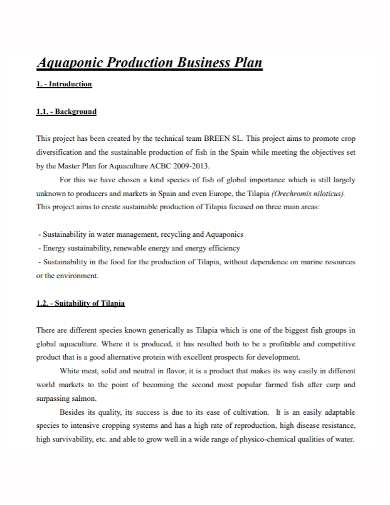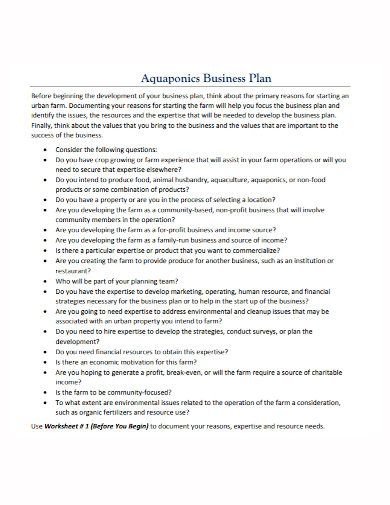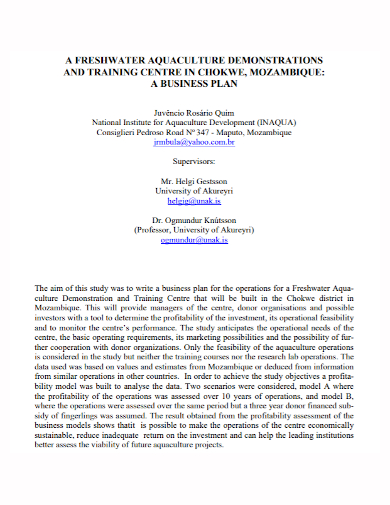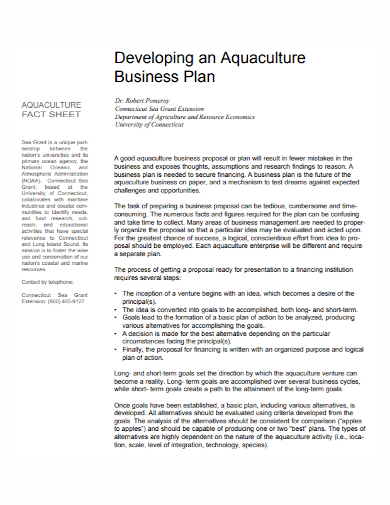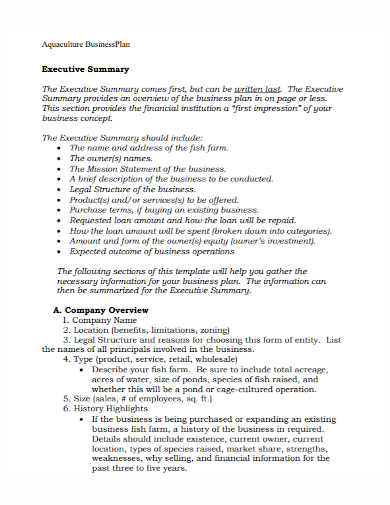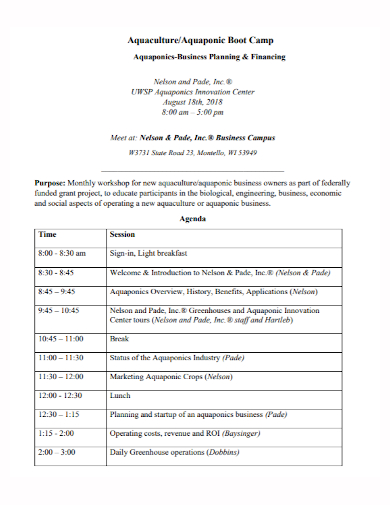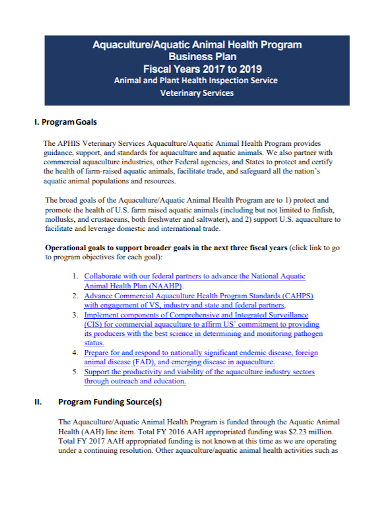If you live near a body of water such as in coastal areas or river banks, or near lakes, or if you have a large area on your property and you have set aside some money to invest in a new business, it’s not surprising to know if you have an aquaculture or aquaponics business. Cultivating aquamarine life is profitable, although you need to have specialized skills and extensive knowledge in marine biology to successfully run this type of business. If you’ve been setting your mind to open an aquaculture business, you need a business plan to organize all the things you need to run a business enterprise. Read the article to know how to make an aquaculture business plan.
10+ Aquaculture or Aquaponics Business Plan Samples
1. Aquaculture or Aquaponics Business Plan Template

2. Aquaponics Production Business Plan
3. Aquaponics Business Plan
4. Aquaculture Business Plan
5. Aquaculture Development Business Plan
6. Small Scale Aquaculture Business Plan
7. Aquaculture Business Success Plan
8. Aquaculture Executive Business Plan
9. Aquaculture Aquaponic Business Plan
10. Aquaculture Aquaponic Program Business Plan
11. Sample Aquaculture Business Plan
What is Aquaculture?
Aquaculture, or also called aquafarming, is the controlled cultivation of aquatic organisms, such as fish, crustaceans, mollusks, algae, and aquatic plants mainly for human consumption. It is done and controlled in coastal waters, freshwater ponds, rivers, and tanks.
Details to Include in an Aquaculture Business Plan
1. Executive Summary
Start your business plan with a cover page where you input your information such as the name of your business, address of your business, your name as the owner, and the date when the business plan is completed. Include a logo of your business as well.
The next part to make is the executive summary. This section provides an overview of the overall content of your business plan on-page. It should highlight the mission statement of your business, the legal structure, scope of work of your business, goods or services you offer, the requested amount of funding from investors, your investment in the business, and the expected outcome of your operations.
2. Company Overview
This section is where you describe your company. Include details such as the location of the operations, its entity, details of your fish farm, the products or service you sell or offer, the size of your business, the history of your company, your mission, values, and goals statement, and the nature of your business. Include details of your target market, the purpose why your business exists, and your advantage compared to your competition. Attach all the permits, certifications, and licenses you acquired that let you operate your business legally.
3. Operations Details
This section is where you comprehensively describe details of your fish farm, including construction costs, ease of operation, and productivity, the equipment, vehicles, tools, fixtures, furniture, and other inventory items that are required to run your business. Include other important details such as the topography and zoning details of your business location.
You also need to include details of your data management and risk management. These two are important to mention in your business plan since the data that you have and use are confidential and essential to run your business well and your risk management prevents your business from falling apart.
4. Staff and Management Details
This section is where you describe your organization details such as your staff and your management. List down the names of all your employees and include their professional background information such as past-related employment experience, professional training, and education, certifications or degrees held related to the marine study or aquatic resources study, and other personal information related to business operations.
Outline your organizational structure such as describing each employee’s job positions and to whom they report. Include information about your contractors such as your suppliers who provide you equipment or products that you will need for your business.
5. Marketing Plan
You need to comprehensively write down the details of the study you did regarding the aquaculture field and the businesses related to it. Describe your target market and your trade area. Describe your distribution strategies. Describe how your strategies can bring you profit and meet the needs of your target market.
6. Financial Plan
This is the most detailed section of your business plan. Make sure all the information in this section is concise and accurate. Here are the following details that you should include in your plan:
- competitive advantage from competitors
- sales forecasts and financial assumptions
- measures of success
- the money you’re seeking from investors and reasons where you will use the money (make a financial worksheet to further explain this part)
- breakeven analysis
- bookkeeping and accounting system and process
- rational analysis
- business financing
- personal income tax return
- business and personal income statement
- cash flow projections
- profit loss statement
FAQs
Is aquaculture a profitable business?
Aquaculture is highly profitable if the fish farmers have the right natural resources, good management abilities, and sufficient capital for an investment opportunity to grow their business.
How much is the startup cost for the aquaculture business?
The cost to get started in aquaculture depends on what species of fish you want to cultivate and how big your aquaculture business will be. On average, start-up costs start at $100,000 to over $1 million.
What are the benefits of aquaculture?
Aquaculture has many benefits. Some of these are:
- It helps the economy by providing jobs to people
- It helps feed people
- It helps protect the coastline and aquatic environments, including the aquamarine species and their habitats
- It helps for the development of scientific research of marine life
What are the types of aquaculture?
The different types of aquaculture are fish farming, shrimp farming, oyster farming, mariculture, seaweed farming, and ornamental fish cultivation.
Writing a business plan can be a taxing task to do; after all, you need to commit time to brainstorm, draft, and revise your proposal. We can help you lift that burden a little by providing you with some sample templates above to use as your guide for formatting your business plan or taking inspiration from them. To help you get started writing your aquaculture business plan, download our free sample templates provided above!
Related Posts
FREE 14+ Consulting Business Plan Templates
FREE 13+ Sample Software Business Plan
FREE 13+ Sample Daycare Business Plan
FREE 10+ Juice Bar Business Plan Templates
FREE 10+ Rental Property Business Plan Templates
FREE 10+ Food Catering Business Plan Samples
FREE 9+ Immigration Business Plan Samples
FREE 8+ Distributor Business Plan Samples
FREE 8+ Sample Personal Business Plan
FREE 7+ Sample Short Business Plan
FREE 31+ Sample Business Plan
FREE 25+ Sample Construction Business Plan
FREE 18+ Sample Business Plan Formats
FREE 14+ Travel Business Plan Templates
FREE 14+ One-Page Business Plan Samples

